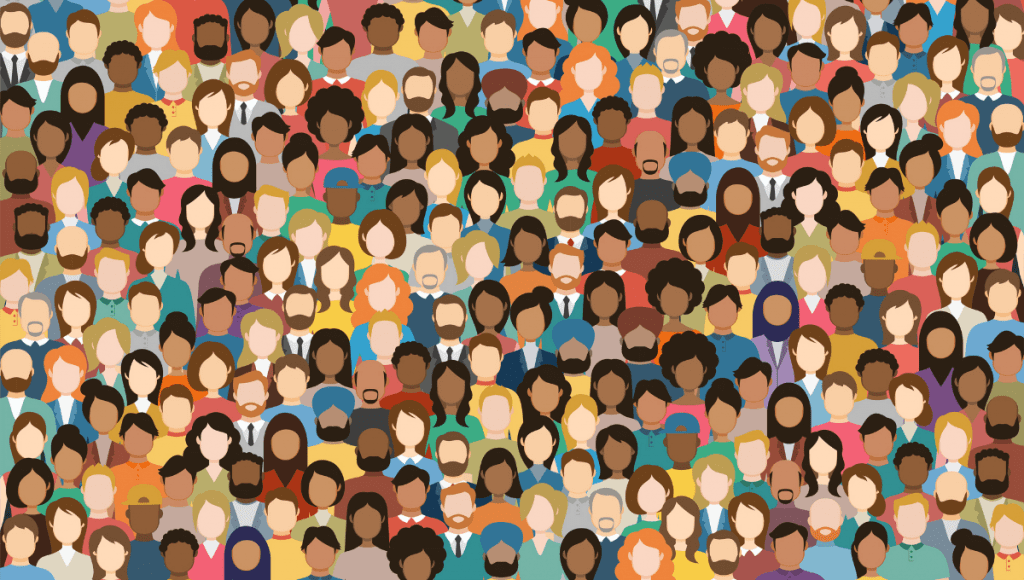Increasingly, the word that crops up when we talk about workplace communities is belonging. Since psychologist Abraham Maslow identified the importance of belonging 80 years ago, positioning it just above the need for safety, to today, when other researchers have moved it up the ranks, saying it’s as necessary as food and shelter, there’s been a fascination with the idea.
Why? Because it’s human nature to crave community, and connection is a basic human need. This idea–in a somewhat less-defined form–has now moved into the lexicon of diversity, equity and inclusion. The pandemic amplified the concept, when forced isolation left many people craving connection and community.
Despite its growing popularity, belonging is elusive and often feels unattainable – something The Great Resignation, and, within it, The Great Realization that only three percent of Black professionals want to go back to the office, has shown. The reason why belonging is so hard to get right is actually quite simple: It’s complicated, both in concept and execution.
Belonging Defies Its Definition
The concept of belonging, at best, is subjective. Many of us think about belonging, “as being accepted and approved by a group or by society as a whole,” according to the American Psychological Association. But, like the grammar of the definition, this belonging-as-sense is passive. It puts the onus of fitting in on the individual who doesn’t fit in.
Another perspective – belonging-as-space – ties the concept to a physical environment, a place where people feel welcome, safe and free to be authentic. On the surface, belonging-as-space shifts responsibility to the creators of the space. However, the idea, “If you build it, they will belong” doesn’t work because people are different, and there’s no universal blueprint for building an environment of belonging. Thus, the responsibility shifts back to the individual who needs to belong. The ambiguity begs the question: which definition is correct?
The answer is both. Belonging cannot solely be about sense or space. There is an innate social element, rife with questions of power dynamics and ownership. Furthermore, feeling comfortable within a community depends on the people who “own” the community space, how they view the idea of belonging itself, and how far they’re willing to go to make belonging possible for others.
Implementing Belonging in Organizations
Company efforts to cultivate this nebulous sense of belonging often unintentionally place the onus of inclusion on those who are excluded. For example, consider how many organizations have defined cultures of belonging as places where everyone can express themselves authentically or bring their full selves to work. Sounds great, right? And yet, for decades, Black people have lost job opportunities or been treated unfairly based on the way they style their hair. Belonging has meant conforming, assimilating, fitting in. Indeed, it has taken a law–the recently passed Crown Act–to address this issue. The environment did not change; those being excluded had to work to fit in. As Brian Lowery, associate dean at Stanford University Graduate School of Business) says, the real question to ask is: “To whom does the space belong?” He adds, “Black employees experience stress associated with working in predominantly white workplaces, which contributes to a lower sense of belonging.”
Gender also plays a role in whether we feel a sense of belonging. The 2021 Culture Report from Achievers Workforce Institute found women were 25% less likely to feel safe dissenting and 20% less likely to say their unique backgrounds and identities were valued. This belonging gap isn’t just unfortunate, it’s unproductive: “Women do not feel the same sense of belonging that men feel and this means they’re less likely to be bringing their whole selves to work,” said Natalie Baumgartner, the institute’s chief scientist. ”This impacts productivity, engagement, commitment, and even feeling safe at work.”
There’s often a discrepancy between the intent and impact of organizational and individual efforts to foster belonging. Without a clear understanding of what belonging means to the people being excluded, there’s no clear way to create belonging-as-space or belonging-as-sense.
Reframing “Belonging”
We can’t create a sense or space of belonging for someone else. What we can create, however, are inclusive spaces that give others an opportunity to belong. It’s a subtle difference that makes the aspirational actionable.
Inclusion acknowledges that someone else “owns” the space, while promising an intentional effort to expand that space for others by creating psychological safety. This undertaking requires three things:
Mitigate bias
Weaving bias mitigation into daily habits can be difficult, but it’s crucial to successfully implement organizational belonging. The first step is to recognize different kinds of cognitive bias, and identify which are present consistently in business decisions and processes. Give individuals mitigation strategies to use in the moment like a shared language for labeling bias; implement organization-wide preventative measures, such as prioritizing potential by redacting college names in the application process, and encourage productive discussions among team members. Keep in mind, this is an ongoing process.
Practice intentional inclusion
In order to practice intentional inclusion across an organization, companies must help individuals be inclusive on an interpersonal level. Intentional inclusion calls for establishing common ground by habituating behaviors focused on helping individuals feel valued and respected, such as encouraging the use of personal pronouns on virtual and social platforms or establishing floating holidays that allow people to celebrate what is important to them culturally.
Support ongoing allyship
Ongoing, operationalized allyship is crucial to fostering an inclusive environment. First, recognize the impact of unfairness and exclusion on individuals. Learn how to identify inequity, and encourage people to speak up when they see it. Employing organization-wide strategies for active allyship will increase equity. Finally, develop lasting behaviors to drive sustainable change.
A space of belonging – built with intentional inclusion by those who own it – can create a sense of belonging by all who inhabit it. But habituated inclusion is the key to making both a sense and a space of belonging possible.






